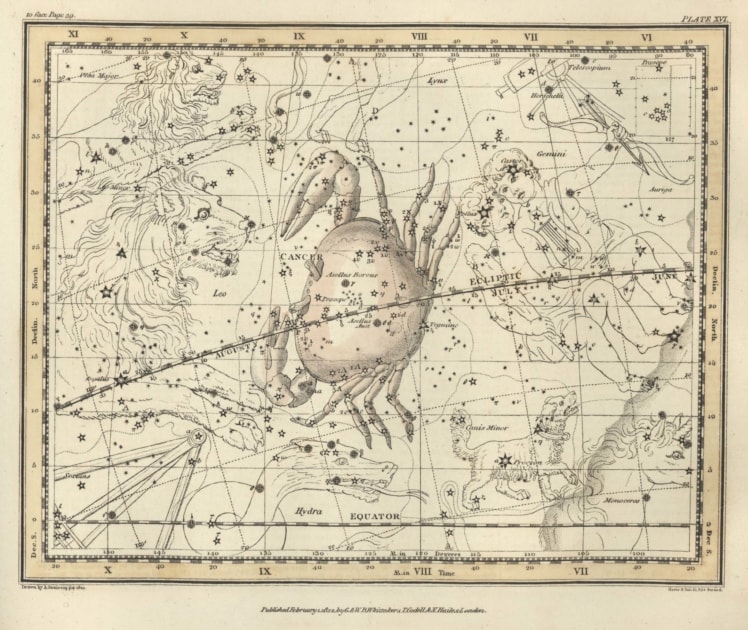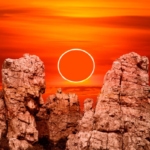A Celestial Gem: Praesepe, The Manger
This open star cluster was once identified as a manger, complete with donkeys, over 20 centuries ago. Learn more!

The dim constellation of Cancer, the Crab, high toward the south during the mid-evening hours, is the least conspicuous of the twelve Zodiacal constellations. It is noteworthy however, because it contains one of the brightest galactic star clusters. But what to call it? It goes by a couple of names.
Some astronomy texts speak of “Praesepe, the Manger,” (pronounced “PRAY-seppy”). A manger is defined as “a trough in which feed for donkeys is placed.”
The cluster was apparently first called Praesepe 20 centuries ago. Galileo first resolved it into stars with his telescope in 1610. More than 100 stars can be seen in binoculars or a telescope.
The cluster’s relatively “new” moniker – “The Beehive” – might have evolved some four centuries ago, when some anonymous person, upon seeing so many stars revealed in one of the first crude telescopes, exclaimed, “It looks just like a swarm of bees!”
Hence, the reason for why some astronomy books call the cluster “Beehive,” while others call it “Praesepe.”
Perhaps the older designation “Praesepe” is preferable since two nearby stars of Cancer have been known for 2,000 years as Asellus Borealis and Asellus Australis — the northern and southern ass colts — feeding from a manger.
Although these may be thought of as willing but somewhat dumb beasts, they would hardly feed from a beehive!
To locate Praesepe, find the constellation Cancer the Crab. Where it forms its Y shape, try to locate the faint smudge of stars.
Praesepe is best viewed with a good pair of binoculars or telescope at the end of February or in early March. As the months pass, it will climb higher in the evening sky. It disappears from the western evening sky in late June, and returns to the eastern morning sky in late August.

Joe Rao
Joe Rao is an esteemed astronomer who writes for Space.com, Sky & Telescope, and Natural History Magazine. Mr. Rao is a regular contributor to the Farmers' Almanacand serves as an associate lecturer for the Hayden Planetarium in New York City.





